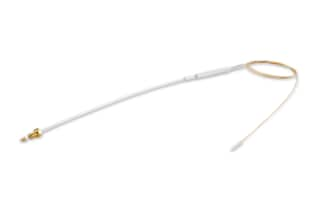
ACQUITY UPLC M-Class Columns are designed for optimal performance for nano- to micro scale liquid chromatographic separation, offering the highest possible sensitivity, resolution and reproducibility for biomarker discovery and protein identification and characterization. As the 75µm to 180µm ID columns are fritted with a novel frit technology, they are able to withstand 15kpsi operating pressure and handle pressure fluctuations during injection extremely well and thus provide superior longevity. In order to achieve maximum performance, it is important to ensure that proper connections are made to minimize peak tailing and poor efficiency. This specific offering contains Waters patented BEH Technology 130A pore, C18, 1.7um particles. Each batch is specifically QC tested using a gradient separation of a tryptic digest of cytochrome c to before being QC accepted as a Peptide separation column.
|
Chemistry |
C18 |
|
Separation Mode |
Reversed Phase |
|
Particle Substrate |
Hybrid |
|
pH Range Min |
1 pH |
|
pH Range Max |
10 pH |
|
Maximum Pressure |
15000 psi (1034 Bar) |
|
Endcapped |
Yes |
|
Silanol Activity |
Low |
|
Particle Shape |
Spherical |
|
Particle Size |
1.7 µm |
|
Endfitting Type |
Valco(male)|360um Open |
|
Pore Size |
130 Å |
|
QC Tested |
Peptide |
|
Format |
Column |
|
Surface Area |
185 |
|
System |
Nano/Micro |
|
Particle Technology |
BEH |
|
USP Classification |
L1 |
|
Inner Diameter |
75 µm |
|
Length |
150 mm |
|
Carbon Load |
18 % |
|
UNSPSC |
41115709 |
|
Application |
Peptide |
|
Brand |
ACQUITY UPLC M-Class |
|
Product Type |
Columns |
|
Units per Package |
1 pk |
ACQUITY UPLC M-Class Peptide BEH C18 Column, 130Å, 1.7 µm, 75 µm X 150 mm, 1/pk
The ACQUITY UPLC M-Class Column is built to exact standards and fritted using cutting-edge technology. These stringent requirements, combined with the chemistry of the column, allow it to tolerate high pressures. It also has a high tolerance for pressure variations during injection, resulting in an increased lifetime.
Add the ACQUITY UPLC M-Class Column to your lab because it is designed for nano- to micro-scale liquid chromatographic separation. For biomarker discovery and protein identification and characterization, the lab equipment provides the best possible sensitivity, resolution, and repeatability. The nanoACQUITY UPLC® Systems are compatible with the lab equipment. Find out more lab equipment like the one listed here by visiting our online store.
It is critical to make adequate connections to avoid peak tailing and poor efficiency if you want to attain optimal performance. This is significant because, in comparison to ordinary flow chromatography, capillary-flow systems can necessitate extra attention to detail on a daily basis. Water's unique BEH Technology 130 pore, C18, 1.7µm particles are used in this product to provide exceptional performance. Before being QC accepted as a Peptide separation column, each batch of the packing material used in the column's production is QC evaluated using a gradient separation of a tryptic digest of cytochrome c.
Each ACQUITY UPLC M-Class Column is individually tested to guarantee that it meets severe quality control, ensuring that you receive only high-quality equipment. The column is made in an ISO 9001-certified Waters facility that is meticulously monitored and controlled.
Browse our website for information on which items operate best with the ACQUITY UPLC M-Class Column, as well as specifics on our comprehensive product catalog. You can also use it to shop for lab equipment.
Explore the MassPREP Peptide Mixture. A void volume marker plus nine carefully selected peptides with a wide range of polarities and isoelectric points make up the MassPREPTM peptide standard mixture. Under reversed-phase HPLC conditions, which are commonly employed for peptide separations, all peaks are easily resolved. The MassPREPTM Peptide Standard Mixture can be used to test HPLC columns and systems that specialize in peptide separations.
What Are The pH Limits Of The ACQUITY UPLC M-Class Peptide BEH C18 Column?
The ACQUITY UPLC M-Class Peptide BEH C18 Column listed here offers a wide pH range of 1-10.